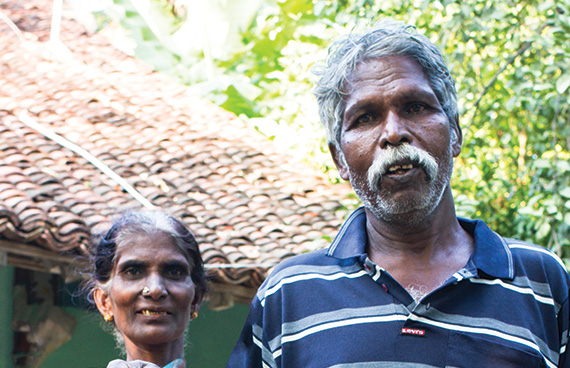Of Food, Fodder & Farm
My Story
I am a small farmer from Periyaperunthottam village in Tamil Nadu. I was struggling with two cows that were unhealthy and hardly produced milk.
When an SST social worker came to know of this, he asked me to bring the cows to the veterinary camp near my village.
I was skeptical at first, and had little faith in these camps. At the camp we were told why animals are unhealthy and how it could be because of a poor diet. We were encouraged to take up the government’s offer of fodder grass seeds and fertilisers – a program that we were unaware of. The vet also carried out artificial insemination in one of the animals.
A total of 64 farmers, including me, benefited from the Green Fodder Cultivation Scheme, which helped provide fodder through the year for my animals. We were taught how to plant fodder and harvest it. We also learnt that the nutritional value of green fodder was much higher than brown straw.
With better feed, the animals grew healthier. I stopped worrying about having to take them out to graze and watch over them.
Previously, I used to end up spending upto Rs. 1,900 annually as medical expenses on the cows and it was very depressing because despite all my efforts the milk yield would not improve. I had almost given up all hope that dairy farming is the way to make a living. With regular vaccination and a rich diet, they are now free from disease.
Through artificial insemination, a calf was born. This has added to my cattle count. The milk I get from my cows has gone up to 6.5 litres daily from 4 litres a day.
I earn an extra amount of up to almost Rs. 2,500 every month from dairy farming. I am using this money to boost the cultivation of crops and fodder. I feel I’m now really able to care for my animals. They look healthier and happier. It’s such a relief.
The SST Way
SST social worker Saravanan who mentored Shwetaranyam
SST found that farmers usually feed the cows dry straw and consider that nutritious, while in reality it’s mostly cud. The problem with green grass or fodder is that often farmers complain they have to walk miles to find it. Worse, in the dry season the land is really arid.
When SST informed Shwetaranyam about the Green fodder scheme, like others, he was a bit skeptical.
SST told him that he could improve yields with training programs that the Agriculture Department offered. These included livestock management, cattle-breeding practices and cattle-shed management.
SST also highlighted the importance of giving a daily bath to cattle. This would keep them healthy and boost milk yields. A bath a day can increase yield by about 100 grams, but farmers aren’t aware of this.
When Shwetaranyam saw the results for himself, he was convinced and became a change agent. He is so enthused by the results that he now supplies green fodder free to others in the village.
SST helped create awareness and ensured Shwetaranyam accessed the free government program, that he wasn’t even aware existed. He also got a cheque for Rs. 2,000 as subsidy. He has four cows and his monthly earnings are about Rs. 5,000.
His mindset has changed. He’s helping others by demonstrating the benefits of mixed cattle fodder.
A fellow villager, who got cuttings from Shwetaranyam and planted them on his land, now earns Rs. 4,000 from them. He, in turn, is helping spread the word and the benefits, which is a great way to popularize better practises.
Our Takeaways
Usually farmers are easier to convince when they are given access to state-funded discounted and trial programs.
So once they know they have an inexpensive option, they are willing to give it a go.
The state provides many services, but it’s mostly unexplored by scores of farmers, because they just don’t know it exists. Therefore, creating awareness itself is half the problem solved.
